Although some pairs come pre-laced, knowing how to tie walking shoes correctly can significantly impact how comfortable you are while wearing them.
There are decorative styles of tying shoelaces, but many lacing patterns can also alleviate pain and prevent injuries.
It’s also important to consider the shoes’ mileage, the type of activity you plan to do, where you’ll use them, and your foot type.
This way, you can ensure ultimate comfort and the best performance.
How To Tie Walking Shoes
Lacing makes a significant difference in how your walking shoe fits. Hence, we will look at some lacing techniques to make you comfortable walking.
For High Arches
Feet with high arches may experience numerous painful problems like ankle sprains, pressure calluses, and stress fractures.
You can use the window lacing technique for high arches concerns. This method will allow you to tighten the laces without affecting the fit across the arch or instep.
Step 1: Starting from the bottom, lace in a criss-cross fashion through the first pair of eyelets.
Step 2: Crossing the shoestrings over, lace through the second pair of eyelets.
Step 3: Lace straight through the third pair of eyelets on each side without crossing over.
Step 4: Cross the laces over from the fourth set of eyelets onwards before tying.
Step 5: Lastly, adjust the tension of the shoestrings as you wear the shoes to find the comfortable tightness.
For High Instep or Midfoot
Generally, people with high arches have high midfoot or instep where the top of the foot between the forefoot and hindfoot is raised.
You can try the window lacing technique similar to the one used for high arches but with minor adjustments to the pattern.
Step 1: From the bottom, feed the lace through the first set of eyelets.
Step 2: Cross the laces over, feeding through the second pair of eyelets.
Step 3: Make another cross-over on the third set of holes.
Step 4: Weave the shoestring on the hole directly above it on both sides.
Step 5: Make the crisscross method again up to the last hole.
This lacing method provides enough space for expansion. Even tightening the laces will have minimal pressure on the sides and the midfoot or instep.
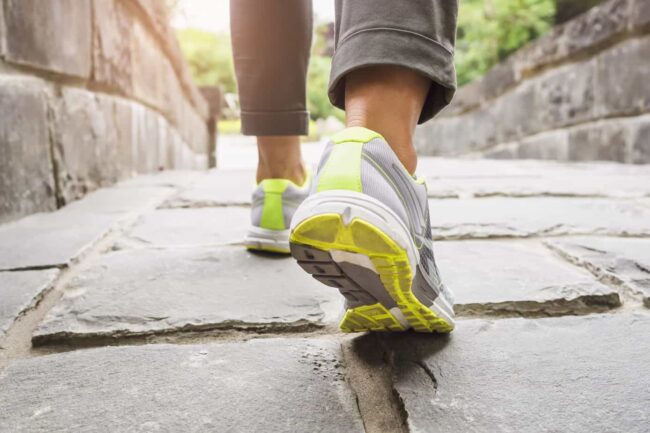
For Heel Slipping
Constant heel slipping can lead to painful blisters. That’s because of the friction caused by regular foot movements inside the shoes.
The runner’s loop or heel lock at the top of your footwear is a common lacing technique that helps prevent heel slippage.
Step 1: Make the crisscross lacing method from the bottom up to the next-to-the-last pair of eyelets.
Step 2: Feed the laces through the last pair of eyelets on each side of your shoes without crossing over.
Step 3: Thread the shoelace through the opposite loop on each side of your shoes.
Step 4: Tie the shoelaces as per usual.
This lacing method provides a tight fit and excellent ankle support, while the rest of the shoes has a loose and relaxed fit.
For Narrow Feet
Your feet would often move around inside your shoes as you walk or run, causing blisters or general pain.
One way to prevent your foot from slipping out of your walking shoes is by using a lacing pattern that will help tighten the fit.
Step 1: From the bottom eyelet, lace through the next hole from the same side.
Step 2: Cross the laces over to the third pair of eyelets.
Step 3: Skip the next set of holes.
Step 4: From the third eyelets, lace through the fifth set of holes.
Step 5: Continue lacing as usual until you reach the last pair of eyelets, and then tie the shoes.
Step 6: Walk around wearing the shoes and adjust the laces as needed.
This lacing technique tightens the footwear more effectively than other methods.
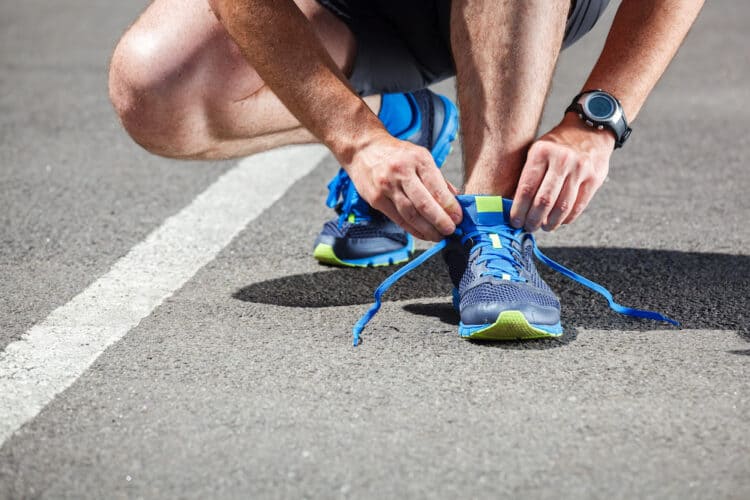
For Tight-fitting Shoes
Sometimes, the shoes will feel tight as you wear them longer throughout the day. In that case, you will want to try a lacing pattern that allows your feet to spread comfortably inside.
Step 1: From the bottom, lace the shoestrings parallel to each other.
Step 2: Avoid using the crisscross lacing pattern up to the top.
Step 3: Feed the laces through every other eyelet and tie them as usual.
The even distribution of laces adds to the overall fit and comfort of the footwear.
For Toe Pain and Black Toenails
When walking, you may notice your feet slipping forward against the toe box, causing toe pain and black toenails. Wearing tight or small shoes will also cause these results.
There is a lacing pattern that you can try to prevent toe pain and black toenails.
Step 1: Weave one end of the shoelace to the eyelet near your toe, bringing it diagonally to the top hole on the other side of your shoe.
Step 2: Leave enough length of shoelace at the top for tying the shoes later.
Step 3: Feed the other end of the shoelace through the vacant bottom eyelet.
Step 4: Pull it inwards and weave diagonally through the next hole on the other side of the shoe.
Step 5: Next, feed the shoelace on the eyelet across before passing it diagonally through an open hole on the other side.
Step 6: Continue the lacing pattern until you reach the top of the shoe.
Step 7: Tie the shoes, as usual, using the two ends of the shoelace.
This lacing pattern lifts the toe cap, giving more space to your toes and alleviating the pressure.
For Wide Feet in General
While you can invest in wider footwear, you can also use a special lacing technique to give your foot more space.
Step 1: Starting from the bottom eyelets of your shoes, cross the laces over through the third set of eyelets.
Step 2: Continue the crisscross lacing technique but skip every other pair of eyelets.
Step 3: Tie the shoelaces at the top set of eyelets as per usual.
This lacing pattern helps loosen the shoes, providing enough space for your feet for a more comfortable fit.
Tying Walking Shoes the Right Way
Knowing how to tie walking shoes the right way will make a significant difference in your overall comfort.
That said, it’s also important to assess your feet before buying a new pair or trying a different lacing technique.
Using the right lacing pattern suitable for your needs allows you to walk longer distances, do so comfortably, and be less prone to foot injuries.
Additionally, with the right pair of walking shoes, you can avoid black toenails, painful blisters, and heel slippage.

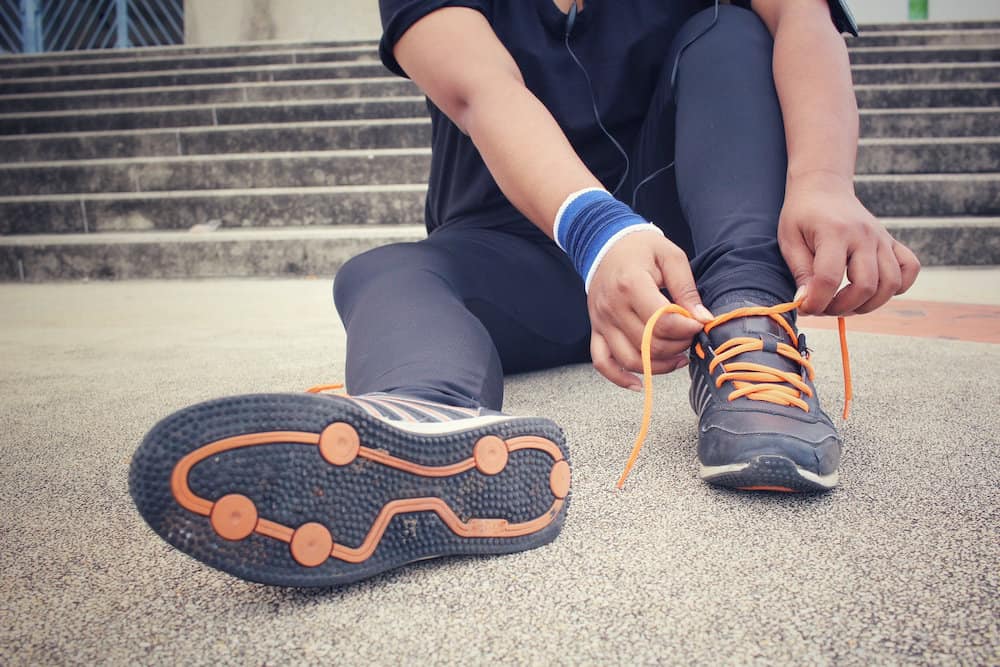
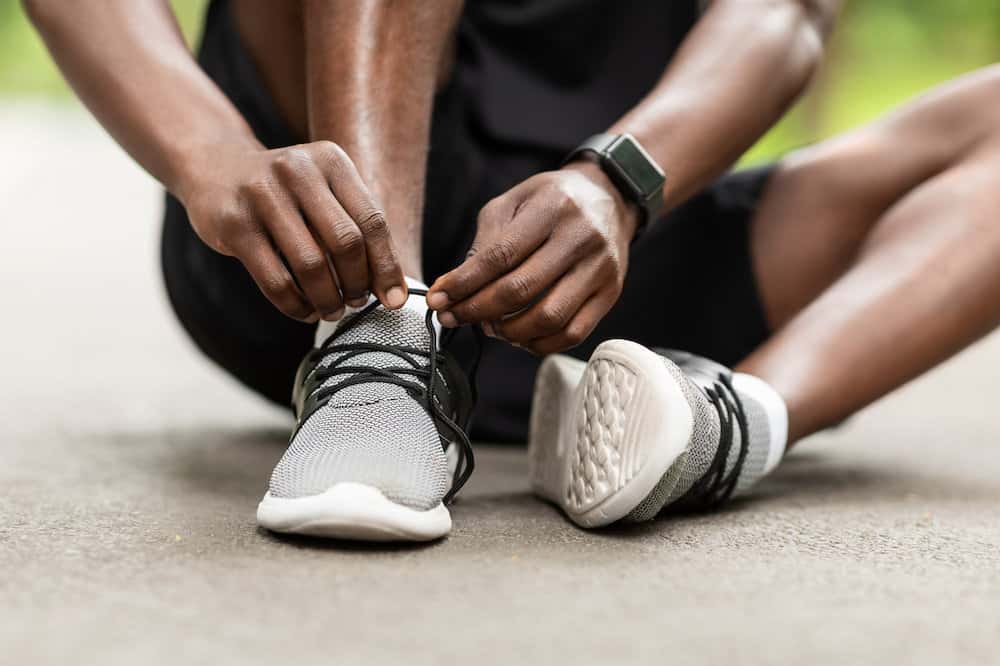
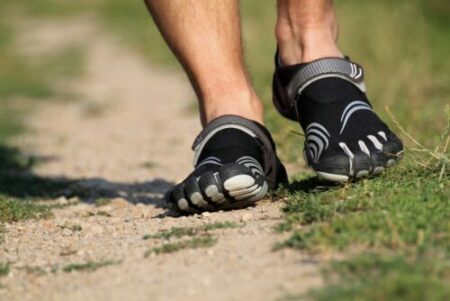



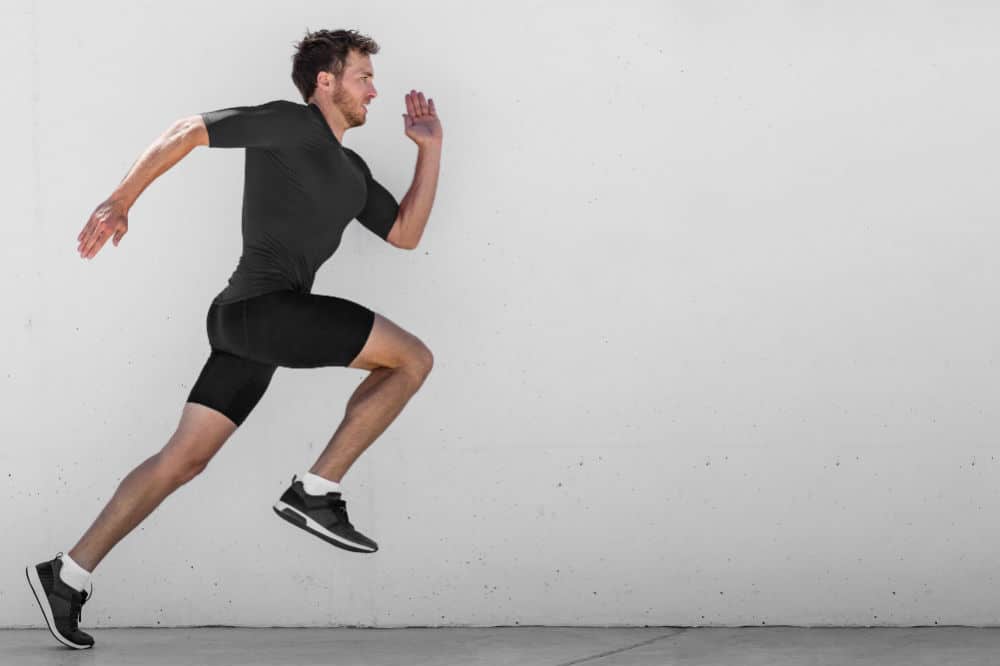






I had no idea! It never crossed my mind that there would be different tying methods for the varying types of feet. I have wide feet, and it makes sense to skip every second hole. I will definitely refer back, especially when I chat with friends about their own unique feet. Great article and advice. I really enjoyed reading. 😊
Hi, Shannon, and thank you.
Thank you for your kind words.
Great to hear about your benefit of the article too.
Don’t hesitate to contact me to help you with anything else or if you have any questions.
This is so interesting! I had never thought about using the laces in a different way for different support. It makes total sense. I’ve always had flat feet, and when I used to run track, I had to tape my arches. I wonder if I had known about the different ways to tie my laces if I would have been able to avoid taping my arches! Thanks for a great article!
Hi, Jordan, and thank you.
Thank you for your kind words.
Yes, this is a problem. I am well known about it. Here are some excellent ideas about shoes for flat feet; hopefully, they can help you.
Great to hear about your benefit of the article too.
Don’t hesitate to contact me to help you with anything else or if you have any questions.